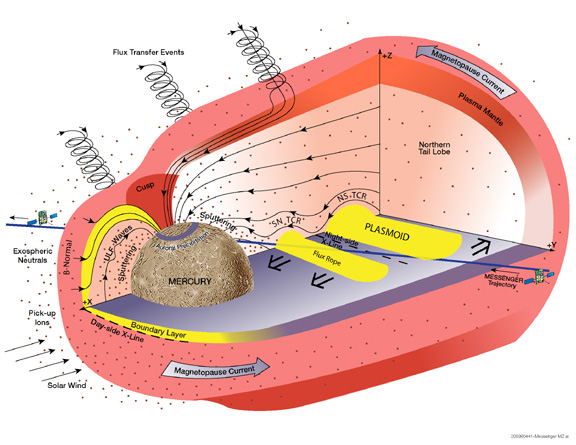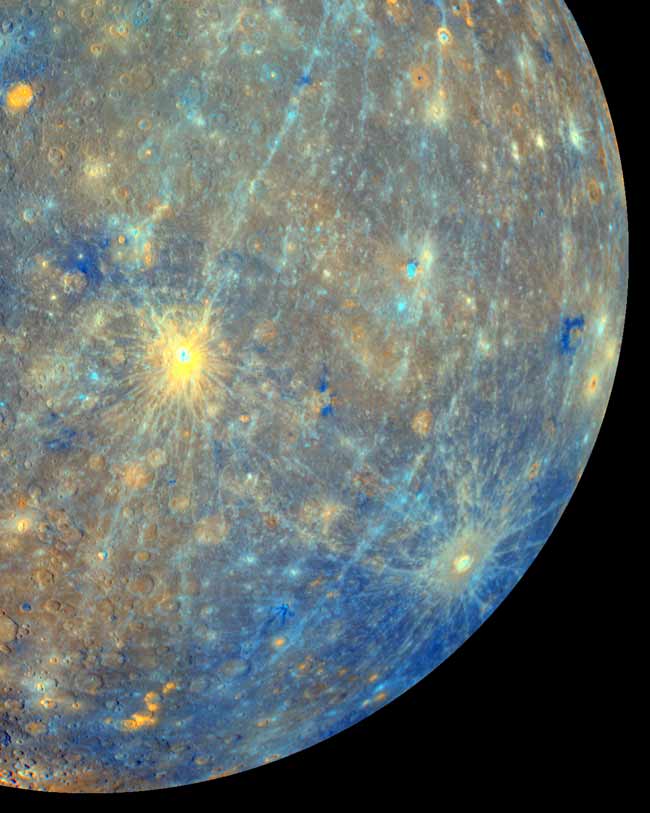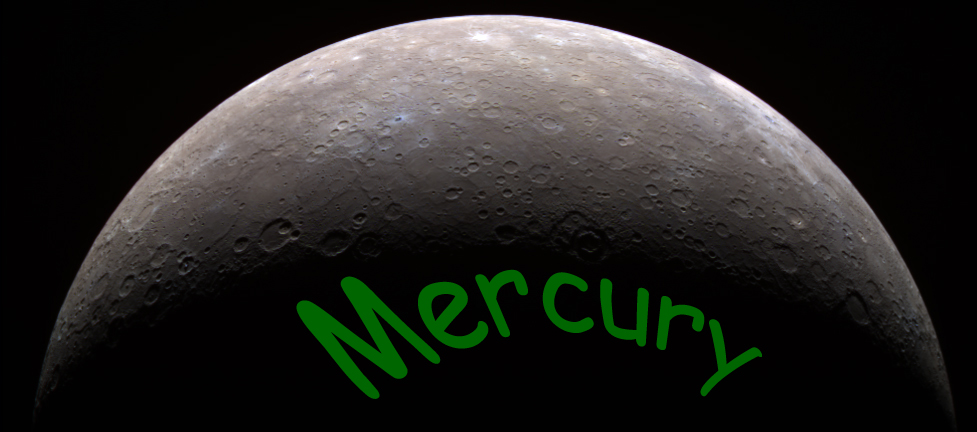
Here, closest to the sun, orbits the small planet of Mercury. Named for the Roman messenger to the gods, this small and fairly unstudied planet is finally becoming understood after years of waiting. Currently orbiting the planet is the Mercury MESSENGER spacecraft. Sent by NASA, it is slowly showing the surface details and composition, the magnetic fields, and its sodium pseudo-atmosphere. Soon, the JAXA/ESA joint venture spacecraft called the BepiColombo will be underway to further study and understand Mercury.
The Little Planet Mercury
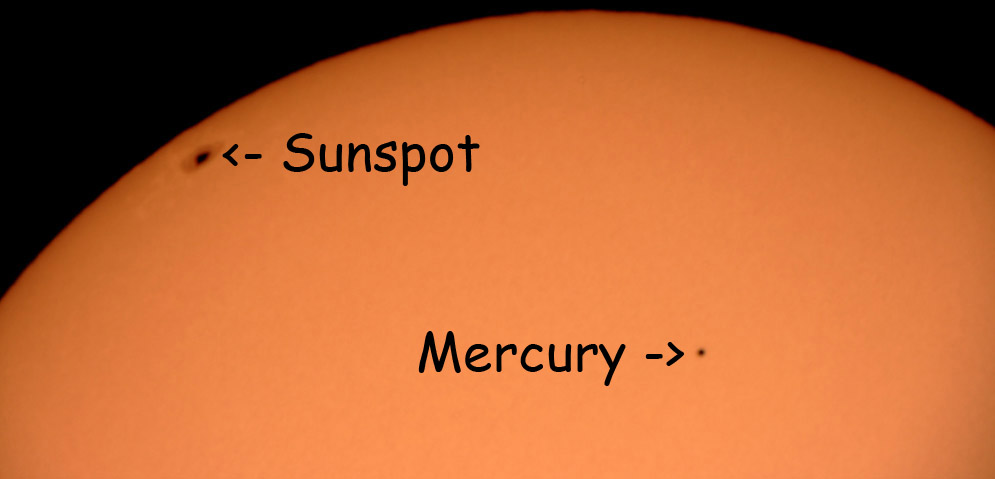
The images above and below give you a picture of how small Mercury actually is. The upper image shows you a Mercury transit across the Sun. Even though its range varies between 40 million kilometers to 70 million kilometers and is closer to us in this picture, you easily see how big a sunspot is in comparison.
Below is an approximate size comparison to the Earth and the Moon. As you see, at 4879 Km (3032 miles), it's just slightly larger than the Moon, which is 3474 Km (2159 miles). Compare this to Earth's diameter of 12,713 Km (7,899 Mi).
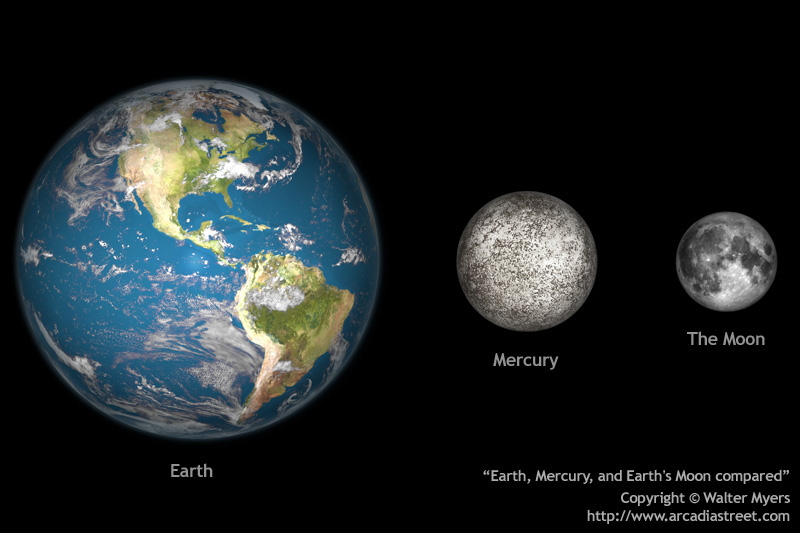
Does Mercury have an atmosphere???? Short answer: Kind of.
Mercury has what is called an Exosphere. It is unlike Earth's atmosphere which is made up of gasses like Nitrogen, Oxygen, Carbon Dioxide, et. al. that are being held into a diffuse sphere by gravity. Mercury's exosphere is constantly being stripped and created by the heat of the sun and the solar wind. As particles and heat stream from the sun, it encounters Mercury's surface and causes materials on the topmost layers to be stripped away. Since Mercury does have gravity, small amounts of Helium and Hydrogen are trapped for short periods of time. As previously stated, as these things are created, they are also being stripped away. The Mercury Messenger mission has given us new insight to the exosphere's tail that trails behind the planet as seen in the video below and has found that it contains relatively high amounts of Sodium.
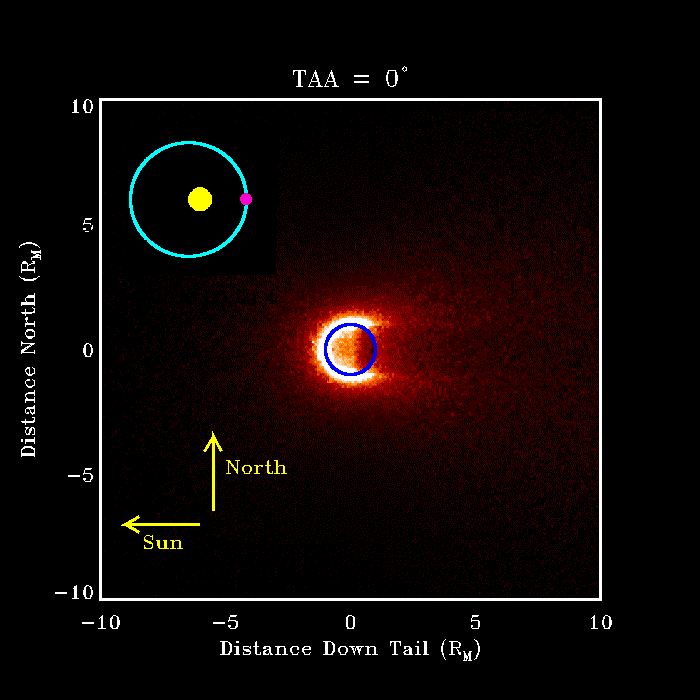
Magnetic fields? On this tiny planet?
Yes, Mercury, as small as it is, has a magnetic field! Much like that on Earth and possibly, due to the same mechanism. Here, our magnetic field is caused by the core and mantle's dynamo effect. This has been theorized to occur on Mercury also since the magnetic field has been seen to vary over time and the Messenger spacecraft has failed to detect any magnetic variances in the crust as would be seen if the planet had a trapped magnetic field due to the alignment of material in its mass. It should have a magnetic field on par with that of the Earths, but it's about 100x weaker. This may be due to the presence and close proximity of the Sun and its solar wind inhibiting the field.
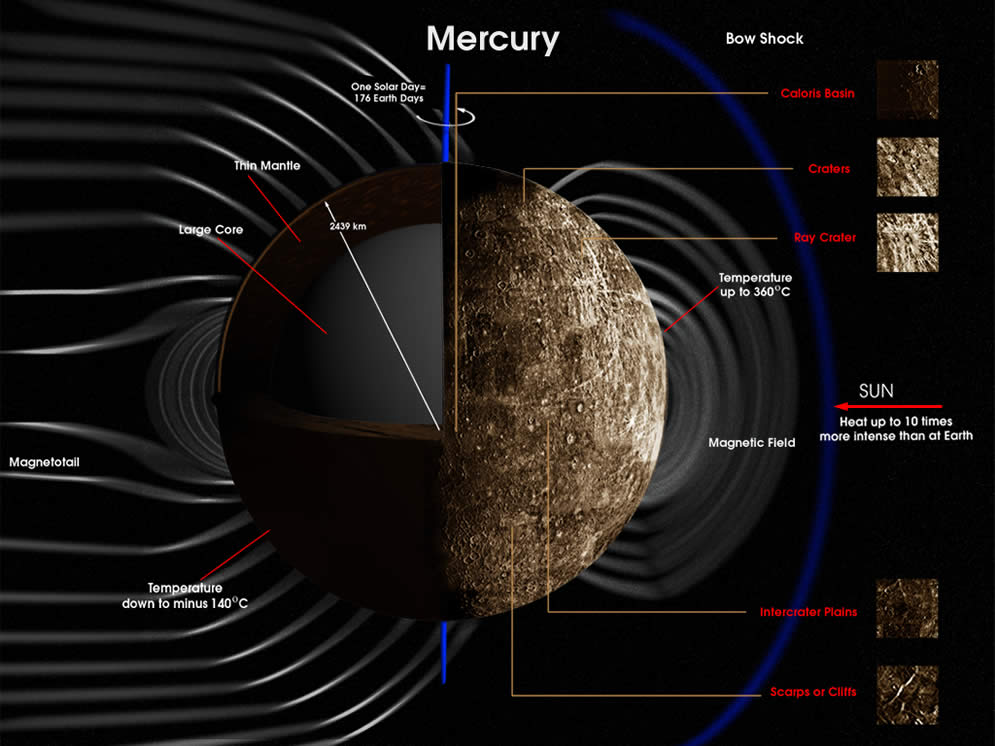
The magnetic field of Mercury is affected in similar ways as our Earth's. The diagram below shows how the magnetic field is distorted and shaped by the solar wind and the sun's magnetic influences. This is very similar to Earth's magnetic field but the influence on Mercury is much greater when you account for the relative strength of its field and how much closer it is to the Sun.
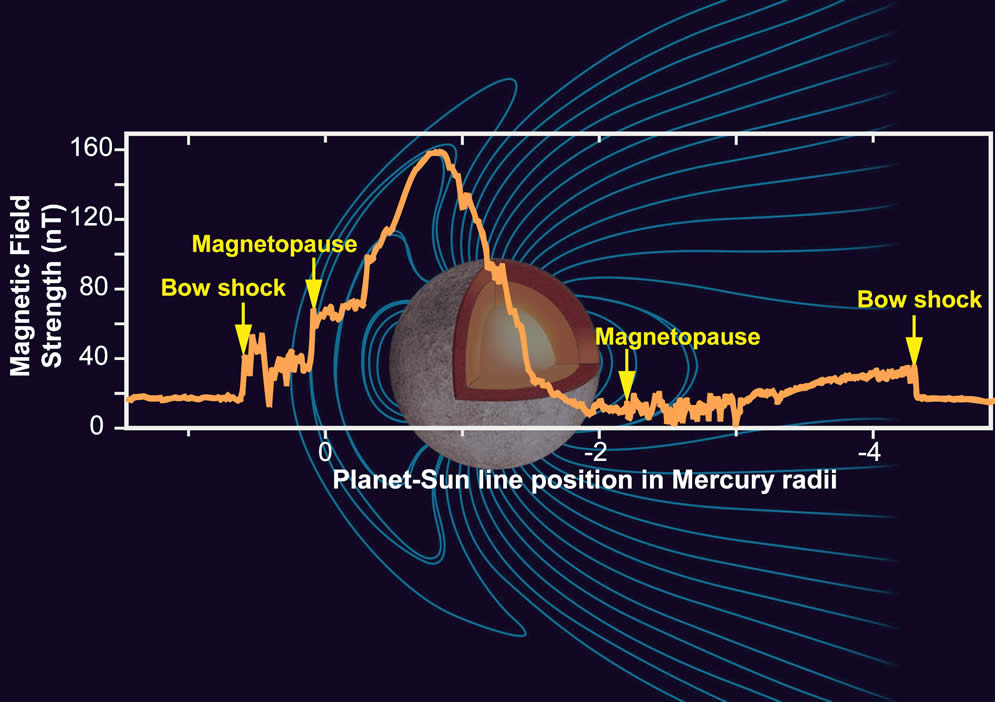
This next graphic is showing the complexity of the interactions of the magnetic fields of the Sun and Mercury. By studying Mercury's magnetic field, it has also helped scientists learn more about our own. Occurrences called Flux Transfer Events were seen on Mercury and have been studied before on Earth. This occurs when the magnetic fields of the Sun and Mercury combine and twist around each other increasing the magnetic flux (transfer of energy). They were thought to be a continuous event but were recently studied further and found that they do indeed change.
